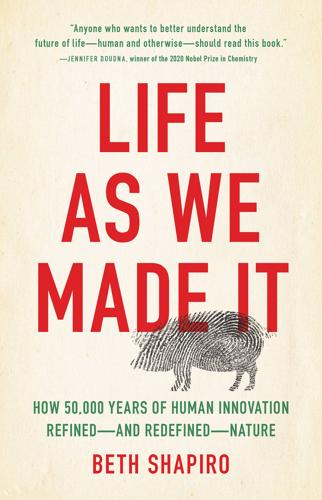
Life as We Made It: How 50,000 Years of Human Innovation Refined--And Redefined--Nature
by
Beth Shapiro
Published 15 Dec 2021
With each generation, the proportion of American chestnut DNA in each tree’s genome increased. Today, after three generations, these trees are 85 percent American chestnut and 15 percent Chinese chestnut. However, they also have reduced resistance to the fungal blight compared to trees with more Chinese chestnut DNA, which suggests that resistance is achieved by a suite of genes working in concert rather than just a single gene. While imperfect, these trees are helping American chestnuts make a comeback. Today, TACF supports forty restoration stands of hybrid trees across the former native range of the American chestnut. The American Chestnut Foundation’s hybrid trees are good but not great replicas of purebred American chestnuts.
…
Unfortunately, even these isolated stands are now threatened. The largest surviving stand—a nearly 100-year-old cluster of American chestnut trees near West Salem, Wisconsin—began showing signs of fungal infection in 1987. The American chestnut is, in a filling-its-ecological-niche sense, extinct. But the zombie shoots and expat trees provide what every de-extinction scientist desperately wants: living cells. Efforts to fill the vacant niche of the American chestnuts in eastern forests began in the 1920s. When imported fungus-resistant Chinese chestnuts failed to thrive in the American habitat, plant breeders tried to hybridize Chinese trees with surviving American trees—a standard approach in plant biotechnology.
…
Unfortunately, while the resulting hybrids did inherit resistance to the fungal disease, they fared poorly, presumably because such a large portion of their genomes had evolved elsewhere. In 1983, The American Chestnut Foundation was established, kicking off a decades-long quest to find a cure to chestnut blight. TACF was founded as a collaboration of conservation-minded laypeople and scientists, many from the State University of New York’s College of Environmental Science and Forestry. Their first project was to improve hybrid trees by increasing the amount of American chestnut DNA in their genomes. TACF scientists embarked on a thirty-plus-year backcrossing program in which they bred resistant hybrids with pure American chestnuts. With each generation, the proportion of American chestnut DNA in each tree’s genome increased.

Whole Earth Discipline: An Ecopragmatist Manifesto
by
Stewart Brand
Published 15 Mar 2009
In Susan Freinkel’s lovely book on the subject, American Chestnut: The Life, Death, and Rebirth of a Perfect Tree (2007), the rebirth refers to efforts to genetically engineer a blight-resistant American chestnut. Two researchers made a derivative of a frog gene they thought would do the trick, but everyone told them they mustn’t put a frog gene in a plant that people eat. A forest biotech company named ArborGen approached the American Chestnut Foundation, offering to support research on a GE chestnut. They were turned away, of course. But research is going ahead anyway; I bet that an American chestnut 2.0 will be thriving by the 2020s and that Greens will welcome it by the end of that decade.
…
Ackroyd, Peter Adamchak, Raoul Advanced Composition Explorer (ACE) aerosols AES Africa genetic engineering and wildlands restoration and Africa Harvest Biotech Foundation African Agricultural Technology Foundation (A ATF) African Biofortified Sorghum Project Agricultural Testament, An (Howard) agriculture climate change and contract farming and genetic engineering and Green Revolution and milpa field system and Native Americans and no-till form of slash and char in urbanization and Agriculture Department, U.S. Alexie, Sherman algae Algeny (Rifkin) alien invasives Allen, William Alley, Richard AllianceBernstein All Species Inventory Amazon rain forest Ambedkar, B. R. Ambio Amboseli National Park American Chestnut (Freinkel) American Chestnut Foundation America Needs Indians America’s Ancient Forests (Bonnicksen) Ames, Bruce Ammann, Klaus Anastas, Paul Anderson, Kat Anderson, Rip Andreae, Meinrat Angel, Roger Archer, David Arctic Arctic Marine Council Argentina Asia genetic engineering and Green Revolution and urbanization and see also specific countries Asian Development Bank Asilomar Conference on Recombinant DNA Molecules Association of Space Explorers asteroids Australia Ausubel, Jesse autocatalytic technologies automobiles background radiation bacteria gene transfer and human body and seawater and Baer, José Baer, Steve Bailey, Ronald Baker, Robert Baldwin, J.
…
Throughout Discipline I make a number of predictions for which I should be held accountable. They include forecasts about urbanization after the 2009 financial crisis, peak world population, Chernobyl National Park, GE poplars in China, the future opinions of Amory Lovins and Bjørn Lomborg, the engineered revival of the American chestnut, and GE biocontrol organisms for restoration. Formal, falsifiable versions of the predictions, complete with my detailed argument in each case, have been placed on a Web site called Long Bets: www.longbets.org. There you may vote on my forecasts, comment about them, and even bet money against me about them.

Mini Farming: Self-Sufficiency on 1/4 Acre
by
Brett L. Markham
Published 14 Apr 2010
Chestnut blight was introduced into the United States before 1900 through the importation of various Asian chestnut species that carry the causative fungus but are resistant to it themselves. The American chestnut, native to Eastern North America, has no resistance to this fungus; within a generation this majestic tree, soaring up to 100 feet and measuring up to 10 feet across, was reduced to little more than a shrub that struggles a few years before succumbing to the threat. To put the impact of chestnut blight into perspective, it is estimated that in 1900, 25% of all the trees in the Appalachians were American chestnuts. There are four ways of dealing with chestnut blight: prompt removal of infected branches, treatment of cankers in existing trees for five years with injections of a hypovirulent strain of the fungus, planting resistant Asian chestnut varieties, and planting American varieties that have incorporated disease-resistant genes through repetitive backcrossing and selection to maximize native DNA content while retaining resistance genes.47 Mini-farmers interested in growing and preserving American chestnuts should seek guidance (and seeds!)
…
There are four ways of dealing with chestnut blight: prompt removal of infected branches, treatment of cankers in existing trees for five years with injections of a hypovirulent strain of the fungus, planting resistant Asian chestnut varieties, and planting American varieties that have incorporated disease-resistant genes through repetitive backcrossing and selection to maximize native DNA content while retaining resistance genes.47 Mini-farmers interested in growing and preserving American chestnuts should seek guidance (and seeds!) from the American Chestnut Cooperators’ Foundation (www.accf-online.org). Farmers interested in resistant Asian stocks can find suitable varieties at local nurseries. Pecan scab, evidenced by sunken black spots on leaves, twigs, and nuts, is more of a problem in the southern than northern states.
…
Table 17 gives the ultimate distance that the trees should be from each other when fully grown. Table 17: Nut Tree Planting Distance Type of Nut Tree Distance between Trees Black walnut, hickory, pecan, and hican 50 feet in all direc tions English and Persian walnut 35 feet in all direc tions Chestnut (Chinese, most American chestnuts succumbed to the chestnut blight) 40 feet in all direc tions Filberts 15 feet in all direc tions Keep in mind that nut trees produce nuts long before reaching full size and that nut wood is some of the most expensive, so selling it could net a nice bundle. If you wish to do so, plant the nut trees about 10 feet apart and then selectively harvest them for wood as their branches come close to touching.

A Walk in the Woods: Rediscovering America on the Appalachian Trail
by
Bill Bryson
Published 8 Sep 2010
The problem arises when a tree encounters an attacker for which evolution has left it unprepared, and seldom has a tree been more helpless against an invader than the American chestnut against Endothia parasitica. It enters a chestnut effortlessly, devours the cambium cells, and positions itself for attack on the next tree before the tree has the faintest idea, chemically speaking, what hit it. It spreads by means of spores, which are produced in the hundreds of millions in each canker. A single woodpecker can transfer a billion spores on one flight between trees. At the height of the American chestnut blight, every woodland breeze would lose spores in uncountable trillions to drift in a pretty, lethal haze on to neighboring hillsides.
…
Two-hundred-year-old pecan trees were commonly chopped down just to make it easier to harvest the nuts on their topmost branches. With each passing year the character of the woods changed perceptibly. But until quite recent times—painfully recent times—one thing remained in abundance that preserved the primeval super-Eden feel of the original forest: the massively graceful American chestnut. There has never been a tree like it. Rising a hundred feet from the forest floor, its soaring boughs spread out in a canopy of incomparable lushness, an acre of leaves per tree, a million or so in all. Though only half the height of the tallest eastern pines, the chestnut had a weight and mass and symmetry that put it in another league.
…
At the height of the American chestnut blight, every woodland breeze would lose spores in uncountable trillions to drift in a pretty, lethal haze on to neighboring hillsides. The mortality rate was 100 percent. In just over thirty-five years the American chestnut became a memory. The Appalachians alone lost four billion trees, a quarter of its cover, in a generation. A great tragedy, of course. But how lucky, when you think about it, that these diseases are at least species specific. Instead of a chestnut blight or Dutch elm disease or dogwood anthracnose, what if there was just a tree blight—something indiscriminate and unstoppable that swept through whole forests? In fact, there is. It’s called acid rain. But let’s stop there.
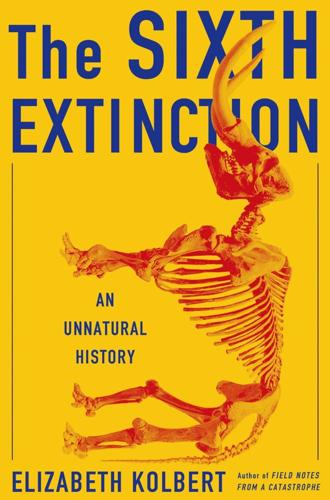
The Sixth Extinction: An Unnatural History
by
Elizabeth Kolbert
Published 11 Feb 2014
When an entirely new pathogen shows up, it’s like bringing a gun to a knife fight. Never having encountered the fungus (or virus or bacterium) before, the new host has no defenses against it. Such “novel interactions,” as they’re called, can be spectacularly deadly. In the eighteen hundreds, the American chestnut was the dominant deciduous tree in eastern forests; in places like Connecticut, it made up close to half the standing timber. (The tree, which can resprout from the roots, did fine even when heavily logged; “not only was baby’s crib likely made of chestnut,” a plant pathologist named George Hepting once wrote, “but chances were, so was the old man’s coffin.”)
…
“is precisely what Homo sapiens”: David Quammen, The Song of the Dodo: Island Biogeography in an Age of Extinctions (1996; reprint, New York: Scribner, 2004), 333. it made up close to half the standing timber: Van Driesche and Van Driesche, Nature out of Place, 123. “not only was baby’s crib”: George H. Hepting, “Death of the American Chestnut,” Forest and Conservation History 18 (1974): 60. According to a study: Paul Somers, “The Invasive Plant Problem,” http://www.mass.gov/eea/docs/dfg/nhesp/land-protection-and-management/invasive-plant-problem.pdf. Although earthworms are beloved: John C. Maerz, Victoria A. Nuzzo, and Bernd Blossey, “Declines in Woodland Salamander Abundance Associated with Non-Native Earthworm and Plant Invasions,” Conservation Biology 23 (2009): 975–81.
…
Heatwole, Harold, Terence Done, and Elizabeth Cameron. Community Ecology of a Coral Cay: A Study of One Tree Island, Great Barrier Reef, Australia. The Hague: W. Junk, 1981. Hedeen, Stanley. Big Bone Lick: The Cradle of American Paleontology. Lexington: University Press of Kentucky, 2008. Hepting, George H. “Death of the American Chestnut.” Forest and Conservation History 18 (1974): 60–67. Herbert, Sandra. Charles Darwin, Geologist. Ithaca, N.Y.: Cornell University Press, 2005. Herrmann, E., et al. “Humans Have Evolved Specialized Skills of Social Cognition: The Cultural Intelligence Hypothesis.” Science 317 (2007): 1360–66.

The End of Doom: Environmental Renewal in the Twenty-First Century
by
Ronald Bailey
Published 20 Jul 2015
Biotechnology could also restore the majestic American chestnut to its home in the forests of the eastern United States. In the early twentieth century, chestnut blight fungus introduced from overseas devastated American chestnuts—the then-dominant trees in eastern forests stretching from Maine to Mississippi. Researchers at the State University of New York College of Environmental Science and Forestry (SUNY), working with the American Chestnut Research and Restoration Project, used genetic engineering techniques to introduce a gene from wheat that confers strong blight resistance into American chestnut trees. They recently ceremonially planted some of the new blight-resistant chestnuts at the New York Botanical Garden in the Bronx, where the blight was first identified.

Under a White Sky: The Nature of the Future
by
Elizabeth Kolbert
Published 15 Mar 2021
Brand has co-founded a group, Revive & Restore, whose stated mission is to “enhance biodiversity through new techniques of genetic rescue.” Among the more fantastic projects the group has backed is an effort to resurrect the passenger pigeon. The idea is to reverse history by rejiggering the genes of the bird’s closest living relative, the band-tailed pigeon. Much closer to realization is an effort to bring back the American chestnut tree. The tree, once common in the eastern United States, was all but wiped out by chestnut blight. (The blight, a fungal pathogen introduced in the early twentieth century, killed off nearly every chestnut in North America—an estimated four billion trees.) Researchers at the SUNY College of Environmental Science and Forestry, in Syracuse, New York, have created a genetically modified chestnut that’s immune to blight.
…
As Tizard points out, we’re constantly moving genes around the world, usually in the form of entire genomes. This is how chestnut blight arrived in North America in the first place; it was carried in on Asian chestnut trees, imported from Japan. If we can correct for our earlier tragic mistake by shifting just one more gene around, don’t we owe it to the American chestnut to do so? The ability to “rewrite the very molecules of life” places us, it could be argued, under an obligation. Of course, the argument against such intervention is also compelling. The reasoning behind “genetic rescue” is the sort responsible for many a world-altering screwup. (See, for example, Asian carp and cane toads.)

Nomad Century: How Climate Migration Will Reshape Our World
by
Gaia Vince
Published 22 Aug 2022
Grass verges lining roads and in cities could be diversified and left unmown – again, in the UK, the cumulative verge area is equivalent in size to the county of Dorset. Given the scale and extent of biodiversity loss, interventions are now essential in many cases to enable species to cope with human changes to the environment. We have genetic tools to help species adapt to Anthropocene conditions, although it’s a time-consuming and expensive process. American chestnut trees in the US have been genetically altered to protect the species from blight; black-footed ferrets are being cloned to bring the species back from the brink; and coral colonies are being genetically engineered to withstand hotter seas. In some cases, species in danger will need to be helped to migrate through active translocation; in others, special protective zones and policies will be needed – in Rwanda, for instance, tourists pay a premium to visit gorillas and this money pays for community development projects as well as wildlife protection.
…
Kung peoples Kutupalong refugee camp, Bangladesh Kyrgyzstan Lagos Lake Chad Lammy, David land ownership language/linguistics; language classes for new arrivals; and nation state Laos Las Vegas Latin America: Amazon region; first nation states in; fragile social systems in; impact of climate emergency; mega-El Niño (1997–8); migrants in Parla, Spain; rivers fed by glaciers; rural to urban migration League of Nations Leipzig liberalism Libya Lima livestock farming: by drone; feeding of animals; impact of drought; inhumane treatment of animals; insects as feed; land and water used for; meat and dairy subsidies; need for huge reduction in Ljubljana, Slovenia locust plagues London Macau Maillard chemical reaction maize production, global Malacca Straits Malaysia Maldives Mali Manchester Mangroves Marijuana marine life: fish populations; impact of global warming; starved of oxygen by algae marshes Mayan civilization Mayors Migration Council McCarthy, Kate McCay, Adam McConnell, Ed Medellín, Colombia media, prejudice against migrants Mediterranean Mekong River Melbourne, Pixel Building Merkel, Angela Mesopotamia Met Office, UK, methane Mexico Mexico City Miami Micronesians Middle East migrant cities: the Arctic as new region for; charter cities option; and circulation of community resources; ‘climate haven’ cities; creation of entirely new cities; as cultural factories; environmental sustainability; evidence of decline of tribalism in; expanding existing cities; in the new north; planning future cities; repurposing/adaptation of; successful urban development/planning in; as synergistic; training for rural migrants; water-management infrastructure migrants/immigrants: arrival in family groups; ‘Bangla’ communities in London; contribution to global GDP; creation of active markets by; distinction between refugees and; dominant hostile narratives of in West; ‘economic migrant’ term; evidence of decline in hostility towards; harnessing potential of; immigrant inclusion programmes; as indentured labour; internal migration; Boris Johnson’s language on; language classes for; levels of patriotism of; living in slums/shanty towns; mentoring and support for; as percentage of global population; racist and prejudicial tropes about; returning to origin countries; seasonal; situations of appalling abuse/danger; state-sponsored support needed for migration: and advantageous genetic modifications; barriers to today; as benefitting everyone; controlled by city authorities; as deeply interwoven with cooperation; and diversified genes/culture; evidence of decline of anti-immigrant feeling; free movement ends in twentieth century; and historic climate change; historical; human displacement at record levels; inherited routes and channels; and mental illness; as not reduced by aid; reluctance to move; and skin colour; of stuff/resources; as survival strategy used widely in nature; as valid and essential part of human nature; world’s major cities created by migration, arguments against/fears around: fears around crime and violence; and jobs; long evolutionary roots to prejudice; in the media; populist politicians; pressure on inadequate host services; prospect of radical change; resting on true/pure national identity idea; security/terrorism issues; and welfare systems migration, climate-driven: Covid cooperation as hopeful example; due to flooding; and geopolitical mindset; global agreement on pathways needed; hypothetical scenarios/models enabling; as inevitable; Kiribati’s ‘migration with dignity’ programme; mass movement already under way; move to higher elevations; national and regional relocation schemes; need for strong nation-states; need to plan practically now; numbers affected today; predicted future numbers; and Refugee Convention (1951); risk of domination by wealthy elites; as solution not problem; speed of movement of climate niches; water issues to be main driver migration, urban; access to health and education; community sponsorship models; family retention of farmland; and intensive infrastructure development; as most effective route out of poverty; population fall due to; role of business in migrant integration; from rural areas; successful management of; as unplanned and iterative; in the West (1850–1910); and workforce shortages in global north Miller, David mineral supples/extraction mining industry Mongla (Bangladesh) Mongolian steppes Morocco Mumbai, mussels Myanmar Nairobi Nansen, Fridtjof nation state: Anderson’s ‘imagined communities’; claims that country is ‘too full’; first created by revolutionaries; and genetic variation; and geopolitical mindset; and language; leases/purchases of territory by; model as often failing; nationality as arbitrary line drawn on map; need for reinvention of; as norm after First World War; and system of borders; translocation of existing nation states National Health Service (UK) national identity: and anti-immigrant feeling; and bureaucracy; creation of first nation states; ethnic and cultural pluralism as the norm; evidence of decline of tribalism; feelings of loss of/decline; and ideology of nationalism; lack of political meaning before end of eighteenth century; nation state as norm after First World War; need to change immigration narrative; patriotism of welcomed migrants; predicated on mythology of homogeneity; and supranational identity; transition to pan-species identity Nauru Neanderthals negative emissions technologies Netherlands; Delta Programme; Energiesprong house insulation Neukölln (Berlin) New Orleans New Story (nonprofit) New York City; ‘Big U’ seawall project; NYCID programme New Zealand; Managed Retreat and Climate Adaptation Act Newtok, Alaska Nicaragua Niger, West Africa Nigeria nitrogen Noem, Kristi nomadic pastoralism Nordic nations Normans North Korea Northern Ireland Northwest Passage Norway Notre Dame, University of, Global Adaptation Initiative nuclear power; fusion reactor technology Nusantara (Borneo) Nuuk (Greenland) Obayashi (Japanese firm) oceans/seas: acidification; as energy source in north; and enhanced weathering techniques; global warming absorbed by; impact of 4° C-hotter world; impact of carbon emissions; jellyfish explosions; long-distance migratory voyages; marine heatwaves; and migratory raiders; Miocene Era sea levels; North Atlantic currents; Northwest Passage; nutrient and oxygen circulation; ocean fertilization; release of carbon dioxide; rise in sea levels; sea grasses; sourcing food from; toxic algae blooms oil industry OmniTrax (US freight company) Ottoman Turks Overjeria, Bolivian village Paine, Thomas Pakistan Palaeo-Eskimos, Canadian palaeontology Palestine Panama Papua New Guinea Paris climate meeting (2015) Parla (near Madrid) passports Patagonia Patel, Priti patriotism Pearl River Delta Peatlands people-traffickers Peri, Giovanni permafrost, infrastructure built on Persian Gulf Peru Pfizer vaccine Philippines; nurses from Philistines Photios of Constantinople Phuket, Thailand Phytoplankton plains/steppes plants/vegetation: destruction of by wildfires; genetic tools to help adaptation; grass verge areas; heat damage to crops; during last ice age; move to plant-based diet; planted to increase crop yields; replanting of; rooftop vegetation/gardens plastic waste Pleistocene epoch Poland political and socioeconomic systems: in Africa; benefits to democracy of migration; cooperation during Covid upheaval; corporate food system; democracy based on inclusiveness; development of governance systems; end of multinational empires; erosion in the powers of global bodies; failure over decarbonization; far-right political parties/groups; fossil fuels as embedded in; geopolitical constraints; geopolitical implications of farming’s shift north; global institutions with enforceable powers needed; and ideal temperature question; inequality as failure of policy; institutional bias over skin-colour; institutional trust levels; international diplomacy; move from feudalism to centralized monarchy; nation-state model spreads; need for global planning over migration; need for redistributive policies; need for strong nation-states; new regional unions option; pledge of ‘strong borders’ as vote-winner; possible new political institutions/structures; post-war institutions and inequality; strong/stable institutions in north; translocation of existing nation states; and transnational rivers/’water towers’; vested interests in the rich world; Westphalian state system pollinators pollution Polynesians populist politicians Portugal postcolonial diaspora poverty see inequality and poverty Próspera ZEDE (embryonic charter city) Prussia Puerto Rico Putin, Vladimir Pygmies Qatar race and ethnicity: and anti-immigrant feeling; deliberately prejudicial policies; and demographic change; European colonialism; fallacy of biological ‘race’; heat related inequalities; unconscious bias in society; white supremacists rain gardens rainfall: altering patterns of; captured by roof gardens/storage; seeding of clouds rare earth metals Raworth, Kate, Doughnut Economics, recycling Refugee Convention (1951) refugees: from Afghanistan; barred from working; Burmese Rohingya in Bangladesh; climate change not in legal definition of; distinction between migrants and; EU seeks quota system for; hostile rhetoric towards; judgemental terms used about; and Nansen passports; privately sponsored; from Syrian crisis (2015–16) see also asylum-seekers renewable power production: as adding to, not replacing, fossil fuels; artificial light delivered by LEDs; hybrid hydro-solar power concept; hydroelectric plants; as leading job creator; and net zero targets; phenomenal rise in; refrigerant units in global south; solar-powered closed-cycle farming; storage technology; zero-carbon new-builds Republic of the Congo restoring our planet’s habitability; biodiversity loss; ‘blue carbon’; climate change-biodiversity loss as linked; cooling of global temperatures; decarbonizing measures; enhanced weathering techniques; future repopulation of abandoned regions; genetic tools to help species adapt; as global, labour-intensive task; natural restoration after human abandonment; nature guardianship in tropical regions; need for speed; negative emissions technologies; ocean fertilization; paying communities to protect ecosystems; regenerative agriculture; replanting of vegetation; solar radiation reduction tools, see also geoengineering retail services rice; SRI cultivation process rivers: drying out of; fed by glaciers; heavier rainfall as increasing flows; lack of in Gulf region; pollution discharged into; transnational Roatan, Caribbean island of Rocky Mountains Rome, ancient Romer, Paul Rotterdam rural living: and depopulation crisis; flight from drought/heat hit areas; impact of flooding; massive abandonment of in coming decades; migration to urban areas; and population expansion in Africa; remittances from urban migrants; as single largest killer today; and water scarcity Russell, Bertrand Russia: and charter cities model; depopulation crisis; economic benefits from global heating; economic sanctions on; expansion of agriculture in; infrastructure built on permafrost; invasion of Ukraine (2022); mega-heatwave (2010); migrant workforce in east; as potential area for charter cities; small-scale modular nuclear reactors in; water resources in Rwanda: Hutus and Tutsis in; special protective zones in; and UK asylum-seeker plan Salla, Finnish town of sanitation Saudi Arabia Saunders, Doug Sawiris, Naguib Scandinavia scientific discovery Scotland sea grasses Seasteading movement Seven Dials, London sex industry Shanghai sharing/circular economy Shenzhen Shyaam a-Mbul Siberia silicates Silicon Valley Silk Road Singapore sinkholes Skellefteå, Sweden slavery Slovenia slum dwellers; conditions at Kutupalong refugee camp; in Lagos; in Lima; and urban heat island effect; vulnerability to flooding social class/hierarchies: and anti-migrant attitudes; barriers erected against migration of the poorest; despair and anger of ‘left behind’ natives; development of; and gentrification; middle class migrants; myth of meritocracy; prejudice as often defensive fear-based reaction social networks; benefits of trade; cities as focal points for trade; Dunbar number; entangled ancestries/identities; forged by migrants; and knowledge flow; loss due to gentrification; migrants in family groups; and mistrust of outsiders; need for inclusive governance; and reluctance to migrate; in slum areas; social clustering of migrants; synergy created by; and unjust hierarchies; welcoming of strangers to social services see welfare systems and social services socioeconomic system see political and socioeconomic systems soil: ‘biochar’ use in; biomatter decay in; as carbon store; impact of heat on; impact of wildfires on; integrated soil-system management in China; and overuse of fertilizers; and perennial cereals; use of silicates in solar power Solar Radiation Management Governance Initiative South Dakota South Korea Southern Ocean Soviet Union soya production Spain Spitalfields, London stateless persons Sudan sulphate cooling concept Sumerian civilization Sunak, Rishi Sweden Switzerland Syrian crisis (2015–16) Tabasco, Mexican state of Tabassum, Marina Tahiti Tajikistan Tanzania Tasmania textiles industry Thailand Thepdet, Supranee thermal wallpaper Thiel, Peter Thirty Years War Thwaites Glacier Tokyo Toltecs Tong, Anote Tourism trade and commerce; cities as focal points for networks; free movement of goods; free trade; global trade deals; origins and development of transport infrastructure: aviation; decarbonizing of; electric-powered vehicles; equitable access to; in global south; and limitations of battery weight; problems due to extreme heat; sail power as due a revival; in successful migrant cities; use of foot or pedal trees: American chestnut trees; cycles of burn and recovery; as ‘emissions offset’; giant sequoias; ‘green wall’ tree-planting projects; vine-like lianas Trestor, Anne Marie tropical regions: benefit of solar cooling idea; impact of climate emergency; nature guardianship in; population rise in Trump, Donald Tsipras, Alexis tundra Turkey Turkmenistan Tuvalu UAE Uganda Ukraine: maize exports; Russian invasion of (2022) United Kingdom: ageing population in; anti-immigrant feeling in; Brexit; Commonwealth Immigrants Act (1962); and Covid pandemic; destruction of peatlands in; flood defences in London; historical migration to; history of granting asylum; ‘hostile environment’ policy; impact of climate emergency; and inevitability of change; low statutory sick pay level; migratory shift to southeast; planned fusion reactors; planning laws; renewable power production; Rwanda proposal for asylum-seekers; slow processing of asylum claims; small boats in English channel; wet-farming in United Nations: Global Compact for Safe, Orderly and Regular Migration (2018); HCR; Human Rights Council; International Labour Organization; International Organization for Migration; and Nansen Passport concept; suggested new global migration body United States: Chinese Exclusion Act (1882); ‘climate-proof’ cities in; as created from global migrants; dam removal in; demographic change in; and depopulation crisis; and extreme La Niña events; and future climate problems; Green New Deal; heat related inequalities; Homestead Act; immigrant-founded companies; impact of climate emergency; indigenous communities; and inevitability of change; lack of universal healthcare in; leases/purchases of territory by; low spending on social services; mass incarceration of Mexicans in; meat industry in; migration to since 1980s; and mineral extraction; municipal codes; net zero commitment; nineteenth century migration to; patriotism of migrants; refugee children in detention camps; resettlement project in Louisiana; rural to urban migration; seeding of clouds in; Trump’s work visa restrictions; ‘urban visas’ in; yield gap in university towns urban development/planning: Bijlmermeer (outside Amsterdam); and elderly populations; and inclusive government policies; machizukuri process in Tokyo; need for integrated high-rise/low-rise; new canals/water features to combat heat; parks/squares/public spaces; planning and zoning laws; slum clearance programmes; social capital investment in cities USAID Uttarakhand, Indian state Uzbekistan Venezuela Venice Vermont Vietnam Vikings war/violent conflict: over water scarcity; triggered by climate upheaval water, fresh: circulated, cleaned, stored and reused; closed-circuit water recycling; conflict triggered by scarcity; crop irrigation; desalination techniques; drip-irrigation systems; evaporative losses; geopolitics of water control; held in glaciers; impact of heat on supplies; importance of new water policies; inland lake systems; need for urban underground reservoirs; new waterways and river diversions; pumping of groundwater; purified sewage recycled; as resource anxiety of this century; running dry of aquifers; salination of groundwater; used for livestock; water pricing/tax policies Waterloo, Ontario weather systems: cyclonic storms in Bay of Bengal; El Niño events; extreme La Niña events; extreme weather events; Intertropical Convergence Zone (ITCZ); monsoon regions; trade winds welfare systems and social services: access to in migrant cities; and arguments against migration; and bureaucracy; despair and anger of ‘left behind’ natives; intensive infrastructure development needed; low spending on in USA; migrant access to; migration as benefitting social care systems; punitive restrictions on new migrants Westphalia, Peace of (1648) Whales wheat production, global Wilson, E.
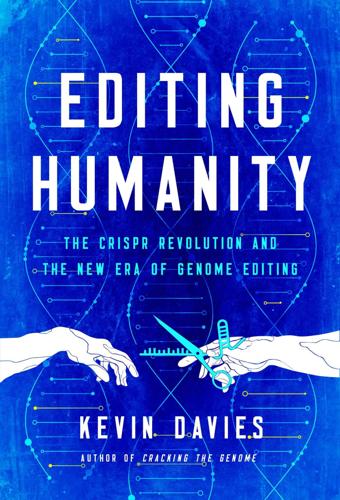
Editing Humanity: The CRISPR Revolution and the New Era of Genome Editing
by
Kevin Davies
Published 5 Oct 2020
Novak et al., “Advancing a New Toolkit for Conservation: From Science to Policy,” CRISPR Journal 1, (2018): 11–15, https://www.liebertpub.com/doi/10.1089/crispr.2017.0019. 20. Gabriel Popkin, “To save iconic American chestnut, researchers plan introduction of genetically engineered tree into the wild,” Science, August 29, 2018, https://www.sciencemag.org/news/2018/08/save-iconic-american-chestnut-researchers-plan-introduction-genetically-engineered-tree. 21. G. G. R. Murray et al., “Natural selection shaped the rise and fall of passenger pigeon genomic diversity,” Science 358, (2017): 951–954, https://science.sciencemag.org/content/358/6365/951. 22.
…
Animals bred in captivity can be vaccinated before release, but as proposed by Ryan Phelan and colleagues at the nonprofit Revive & Restore, CRISPR editing offers a means to transfer plague resistance from the domestic ferret to its black-footed cousin.19 Meanwhile, similar strategies are needed to save some other iconic American plants and wildlife. The American chestnut tree population has been ravaged by chestnut blight, a disease spread by a Japanese fungus that was first observed in the Bronx Zoo. William Powell’s team has engineered a hybrid genetically modified tree that contains a wheat gene that neutralizes the acid produced by the fungus. Powell is petitioning the US government to produce a transgenic forest species,20 despite opposition from environmentalists who worry about GM trees.
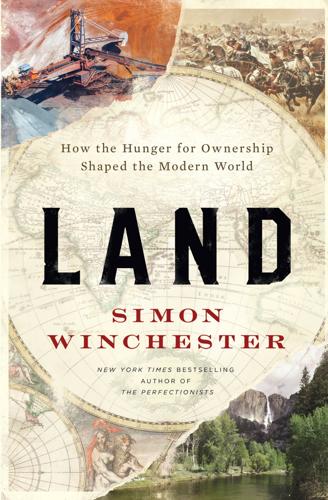
Land: How the Hunger for Ownership Shaped the Modern World
by
Simon Winchester
Published 19 Jan 2021
My own land nowadays has stands of eastern hemlock and pignut hickory, tulip poplar and white pine, beech and birch, conifers and ash, cherry and witch hazel and two kinds of maple, one with sap to be boiled for sugaring, the other tiger-striped and used today in the making of furniture. Apple trees can be found once in a while, though none on my property, so far as I know. No doubt all these trees would have been there in Henry Hudson’s time, and some for long before. There used to be American chestnut trees—a blight has ravaged them in recent years—and it was customary to plant them as corner markers to define the edges of a plot of land. Chestnut was once the dominant wood for building barns and houses, but not since the trees were forced into near extinction. The soil is too thin to support massive species—no great oaks or elms, no trees tall enough and straight enough for repairing or replacing the masts of big sailing ships—so often a motive for a ship’s master arriving in a foreign land after long sea crossing.
…
aboriginal people of Australia, 199–200 antiquity of, 200, 239, 244 bias against, 199 controlled burning by, 240–41, 241, 243, 244–45 Cook and, 235–39 Earth as their mother, 402–3 Guugu Yimithir group, 238 Gweagal family, 237, 237 as landowners, 235 as T.O.’s (Traditional Owners), 200, 239, 244 wisdom of, 235–45, 241 Accursius, Franciscus, 215 Adams, John, 139n Adams, John Quincy, 146 Afghanistan, 49n, 71 border (Durand Line), 81 Africa anti-imperial rebellions, 366 borders and countries created and mapped, 367–68 British and European colonies in, 98–99, 131–32, 363–66, 365 Bronze Age arable farmers, 40 claims of white settlers, 369 competing claims of tribes, 368 concept of landownership and, 369 confiscation of settlers’ lands, 370, 371, 371 country names changed, 368 English as lingua franca, 366 European partitioning of land, 365–66 Europeans leave, 367 missionaries in, 364 nation-building efforts, 368 poverty in, 372 restoration of land in, 366–73, 371 rule by indigenous people, 368 shared land, concept of, 403 trope defining British missionary behavior in, 98, 326 uncultivated land in, 372 See also specific countries, places agriculture Agricultural Revolution, 174 ancient, in China, 44 animal-drawn plough, 44 Bronze Age, 40, 42–43, 46, 172 caschroms (digging sticks), 42–43, 43 demarcation of land and, 42, 45–46 enclosures and, 44, 46, 173 history of, 40–42 Iron Age, iron plough, 43–44 plough’s moldboard, 44 strip lynchets, 45, 45 tools, 42–43 Akhmatova, Anna, 285 Albania-Montenegro border, 75 Aldridge, George, 245 Alexander I, Tsar, 50, 56, 58–59 Algic or Algonquian languages, 16, 16n Algonquin people, 136n Alsop, Joseph, 290 American chestnut trees, 12 American Geographical Society, 72 American Public Land Survey System, 152 American Revolution, 24, 136 Amherst, Jeffery, 137, 137n Anak Krakatau island, 104–5, 105n Andamanese Islanders, 243–44 Andersonstown, Northern Ireland, 265, 266 Andorra-France border, 75–76 Angle Inlet, Minn., 91–92 animals, endangered species on Anak Krakatau, 105 Bolson tortoise, 204 Korean DMZ and, 225–27, 226 Plains bison, 204–6, 206 in Richmond, Bushy, and Greenwich Parks, London, 249 wilding, abandoned farms and, 232–34, 232n wilding and Knepp estate, England, 230–32, 231 wilding and Oostvaardersplassen, Netherlands, 228–29, 234 Anne, Queen of England, 34 Apache people, 150n, 203, 261 Appalachians, 11, 135, 136, 138, 152 Aramaki, Akira, 301–8, 311–16, 318–19 as birthright citizen (Nisei), land buying and, 306–7 family and heritage, 303–5, 313 incarceration and release from Minidoka camp, 301–3 land of, Bellevue, Wash., 302, 303, 306–7, 315–16, 318, 318n obituary of, 319 Aramaki, Hanako Tanako, 313, 319 Aramaki, Hikotara, 303–6, 311 Aramaki, Towa Tasaki, 306, 311, 313 Arapaho people, 149, 261 Argentina’s borders, 75, 77 Aristotle, 53 Armitage, Simon, 225 Ascent of F6, The (Auden), 265 Ashanti people, 403 Asia ancient agriculture, 40, 44 boundaries and, 46 ocean expansion and land loss in, 400 Yellow River (Huang He), 40 Yellow River Valley, 46 Atchison, Topeka and Santa Fe railroad, 142, 151, 152 Atlantic (Winchester), 131 Atlantic Ocean, 10, 11, 99, 367n crossing, 130, 191 rising waters of, 398, 401 Auden, W.
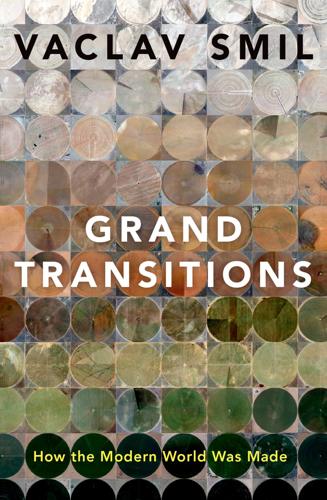
Grand Transitions: How the Modern World Was Made
by
Vaclav Smil
Published 2 Mar 2021
Cane toads, large South American poisonous amphibians introduced to Queensland in 1935 in order to control cane beetles, have been expanding their range by up to 60 km/year and by 2009 they crossed the border of Western Australia and Northern Territory, more than 2,000 km from the site of their original release (DPW 2014). Chestnut blight fungus (Cryphonectria parasitica), introduced at the beginning of the 20th century, destroyed the American chestnut, a large and dominant tree of Eastern American forests (Freinkel 2007). Asian ascomycete fungus (Ophiostoma) arrived in the eastern United States first in 1928 via Europe, and it has destroyed most of American elms (Ulmus americana) as far west as Saskatchewan (Hubbes 1999). And the third Asian invader is woolly adelgid, a small sap-sucking insect (Adelges tsugae) now destroying North American hemlocks, Tsuga canadensis and Tsuga caroliniana (Nuckolls et al. 2009).
…
ReOrient: Global Economy in the Asian Age. Berkeley, CA: University of California Press. FRED (Federal Reserve Economic Data). 2018. Economic data. https://fred.stlouisfed.org/ Freeman, J.B. 2018. Behemoth: A History of the Factory and the Making of the Modern World. New York: W.W. Norton. Freinkel, S. 2007. American Chestnut: The Life, Death, and Rebirth of a Perfect Tree. Berkeley, CA: University of California Press. Fridley, D. et al. 2008. China Energy Databook. Berkeley, CA: Lawrence Berkeley Laboratory. Fruehan, R.J. et al. 2000. Theoretical Minimum Energies to Produce Steel for Selected Conditions. Washington, DC: US Department of Energy Office of Industrial Technologies.
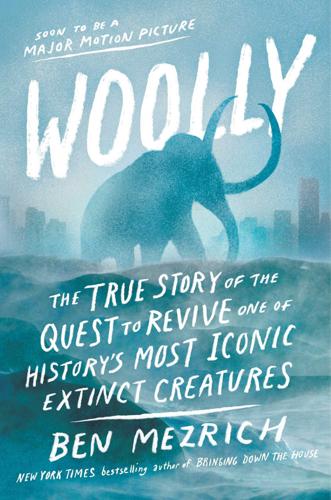
Woolly: The True Story of the Quest to Revive History's Most Iconic Extinct Creature
by
Ben Mezrich
Published 3 Jul 2017
Many wild populations of animals and plants are profoundly threatened by exotic diseases—chytrid fungus in frogs, sylvatic plague in black-footed ferrets, Rapid Ohi’a Death in the keystone ohi’a trees of Hawaii, avian malaria in the forest birds of Hawaii. Can disease resistance be engineered into the genomes of those species? It has been done successfully for the legendary American chestnut tree, once driven to functional extinction by the blight that killed 4 billion trees in the early twentieth century. Scientists at SUNY in New York made the trees blight-proof by introducing a fungus-resistant gene from wheat, and the improved tree is now going through the approval process with government regulators.
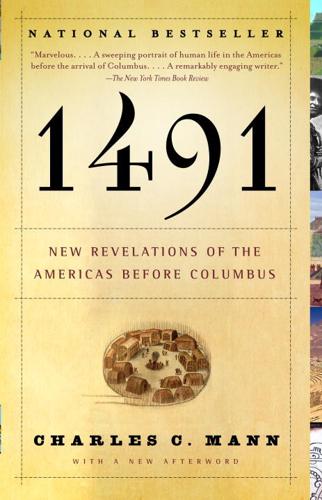
1491
by
Charles C. Mann
Published 8 Aug 2005
Sometime in the first millennium A.D., the Indians who had burned undergrowth to facilitate grazing began systematically replanting large belts of woodland, transforming them into orchards for fruit and mast (the general name for hickory nuts, beechnuts, acorns, butternuts, hazelnuts, pecans, walnuts, and chestnuts). Chestnut was especially popular—not the imported European chestnut roasted on Manhattan street corners in the fall, but the smaller, soft-shelled, deeply sweet native American chestnut, now almost extinguished by chestnut blight. In colonial times, as many as one out of every four trees in between southeastern Canada and Georgia was a chestnut—partly the result, it would seem, of Indian burning and planting. Hickory was another favorite. Rambling through the Southeast in the 1770s, the naturalist William Bartram observed Creek families storing a hundred bushels of hickory nuts at a time.
…
Widespread land clearing: Lopinot and Woods 1993. Sedimentation evidence for flooding: Holley and Brown 1989, cited in Woods 2004:155; Woods 2003. See also, Holden 1996, Neumann 2002:150–51. Haudenosaunee villages: Day 1953:332–34 (six square miles, Denonville, 333; “hundreds of acres,” 338). American chestnuts: Kummer 2003; Mann and Plummer 2002. “They pound them”: Bartram 1996:56. For many groups in the Southeast, milk from mast was the only kind of milk available. Lack of evidence for deaths or hunger: Milner 1992. Palisade: Iseminger 1990. In a novel interpretation, Pauketat argues that the Cahokians’ attempt to shut themselves behind a palisade actually could have been “an offensive tactic” that let Cahokia’s rulers “project a larger-than-normal armed force by freeing up people who otherwise would have guarded the capital” (Pauketat 1998:71).

Green Metropolis: Why Living Smaller, Living Closer, and Driving Less Are Thekeys to Sustainability
by
David Owen
Published 16 Sep 2009
A couple of months after she learned to walk, we moved to a small town in the northwest corner of Connecticut, about ninety miles north of midtown Manhattan. Our house was built in the late 1700s. During a rainstorm one night soon after we moved in, I stuck my head into the attic and ran a flashlight over the underside of the roof. The decking boards had been made, two hundred years before, from the broad trunks of old-growth American chestnut trees, a species that was wiped out by an imported blight in the first half of the twentieth century, and some of them were almost as broad as sheets of plywood. The rafters, which were hand-hewn, were joined not by iron nails but by wooden pegs. Carved near the ends of some of the rafters were large Roman numerals, which had been placed there as assembly aids by the anonymous eighteenth-century builder.
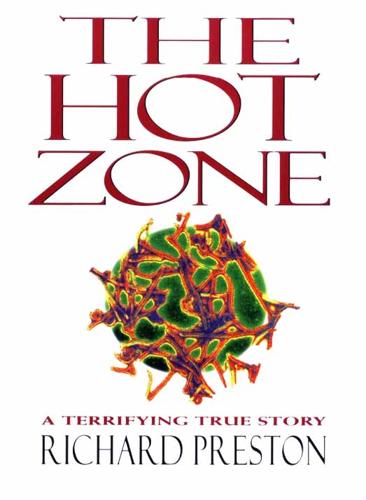
The Hot Zone
by
Richard Preston
Published 1 Jan 1994
One day, she had finally said to Jerry, “You can sit in the driveway in those red leather seats all you want, but I’m not getting in there with you.” So they sold the Cadillac and bought a Honda Accord. The Jaaxes’ house was the largest Victorian house in town, a pile of turreted brick with a slate roof and tall windows and a cupola and wooden paneling made of golden American chestnut. It stood on a street corner near the ambulance station. The sirens woke them up at night. They had bought the house cheap. It had sat on the market a long time, and a story had been going around town that the previous owner had hanged himself in the basement. After the Jaaxes bought it, the dead man’s widow showed up at the door one day.
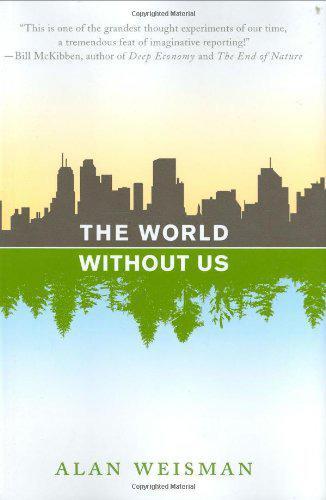
The World Without Us
by
Alan Weisman
Published 5 Aug 2008
As plants die, decay, and lay down more soil cover, the industrial toxins will be buried deeper, and each succeeding crop of native seedlings will do better. And although many of New York’s heirloom trees are endangered if not actually dying, few if any are already extinct. Even the deeply mourned American chestnut, devastated everywhere after a fungal blight entered New York around 1900 in a shipment of Asian nursery plants, still hangs on in the New York Botanical Garden’s old forest—literally by its roots. It sprouts, sends up skinny shoots two feet high, gets knocked back by blight, and does it again.
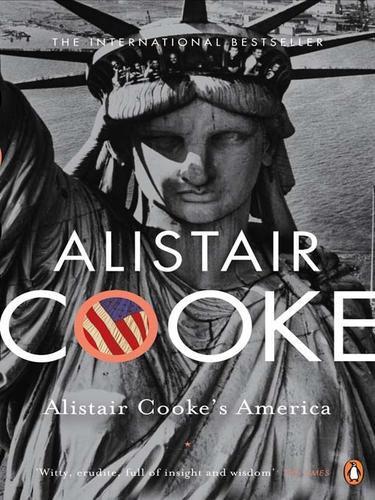
Alistair Cooke's America
by
Alistair Cooke
Published 1 Oct 2008
And traveling past the rickety cabins of the black man’s back country, and through his scabrous city slums, there often seemed to be only one American theme song: ‘Sometimes I’m up, Sometimes I’m down, And sometimes I’m almost to the ground.’ More often than I care to admit, one of the oldest of American chestnuts seemed newly roasted. It is that line of the Italian immigrant asked to say what forty years of American life had taught him: ‘There is no free lunch.’ By now it is a facetious truism, but it is also a profound truth forgotten by the Founding Fathers in the ecstasy of promising everybody life, liberty, and the pursuit of happiness – and it is forgotten again today when committees of Congress imply that transferring $40,000,000 of tax money from the defense budget to revenue sharing will fix everything.
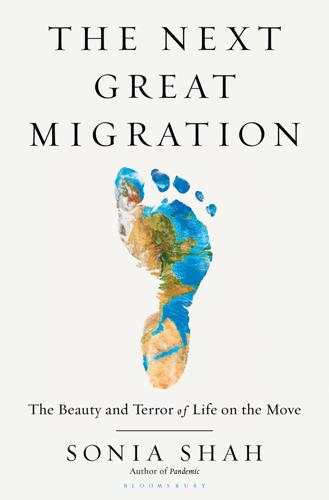
The Next Great Migration: The Beauty and Terror of Life on the Move
by
Sonia Shah
As the creatures he once studied became the subject of extermination campaigns, his assessment of the threat posed by animals on the move took on a new tenor. Everywhere he looked, he saw wild creatures migrating into new places, and precipitating disaster. In the United States, he noted, the arrival of Asian chestnut trees24 had introduced a parasitic fungus called Endothia parasitica, causing “chestnut blight,” which nearly wiped out eastern American chestnut trees. In Europe, a landowner in Czechoslovakia had introduced five North American muskrats. They grew into a population of millions, rampaging through croplands and burrowing into the banks of rivers and streams. In the midwestern United States, the construction of canals introduced the blood-sucking sea lamprey into the Great Lakes.

The Rise and Fall of the Third Chimpanzee
by
Jared Diamond
Published 2 Jan 1991
Europe too has acquired introduced species, of which the misnamed Norway rat is an example (it originated in Asia, not Norway). When species are introduced from one region to another, they often proceed to exterminate some of the new species they encounter, by eating them or causing diseases. The victims evolved in the absence of the introduced Pests and never developed defences against them. American chestnut trees have already been virtually exterminated in this way by chestnut b"ght, an Asian fungus to which Asian chestnut trees are resistant. milarly, goats and rats have exterminated many plants and birds on oceanic islands. Have we already spread all possible pests all around the world? Obviously not; there are many islands still free of goats and Norway rats, and many insects and diseases to try to keep out of many countries by quarantines.
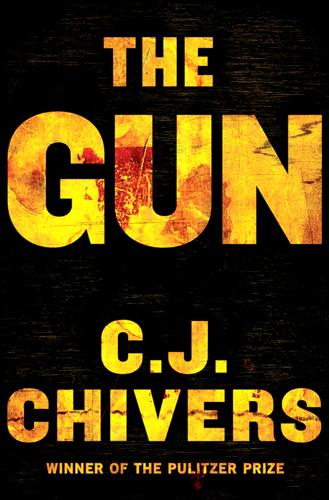
The Gun
by
C. J. Chivers
Published 12 Oct 2010
Shortly after World War II, the army contracted with private researchers, detached from its customs and bureaucracy, who made pointed recommendations for new training and equipment. The group, called the Operations Research Office, combed classified data and literature in offices at Johns Hopkins University and secretly reached conclusions that challenged two preeminent American chestnuts: the value of the long-range rifle and the belief in the shooting skills of marksmen. Available data showed that whatever the abilities of soldiers on rifle ranges, under the stress and visibility conditions of actual war, the preponderance of combat shooting was more pedestrian than legend suggested.
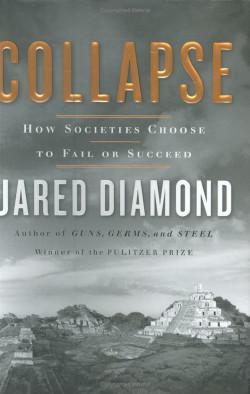
Collapse
by
Jared Diamond
Published 25 Apr 2011
There are by now literally hundreds of cases in which alien species have caused one-time or annually recurring damages of hundreds of millions of dollars or even billions of dollars. Modern examples include Australia's rabbits and foxes, agricultural weeds like Spotted Knapweed and Leafy Spurge (Chapter 1), pests and pathogens of trees and crops and livestock (like the blights that wiped out American chestnut trees and devasted American elms), the water hyacinth that chokes waterways, the zebra mussels that choke power plants, and the lampreys that devastated the former commercial fisheries of the North American Great Lakes (Plates 30, 31). Ancient examples include the introduced rats that contributed to the extinction of Easter Island's palm tree by gnawing its nuts, and that ate the eggs and chicks of nesting birds on Easter, Henderson, and all other Pacific islands previously without rats. 10.
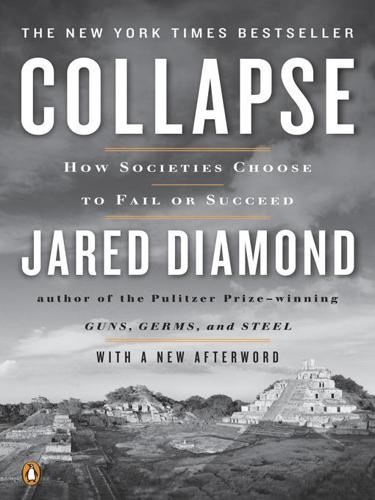
Collapse: How Societies Choose to Fail or Succeed
by
Jared Diamond
Published 2 Jan 2008
There are by now literally hundreds of cases in which alien species have caused one-time or annually recurring damages of hundreds of millions of dollars or even billions of dollars. Modern examples include Australia’s rabbits and foxes, agricultural weeds like Spotted Knapweed and Leafy Spurge (Chapter 1), pests and pathogens of trees and crops and livestock (like the blights that wiped out American chestnut trees and devasted American elms), the water hyacinth that chokes waterways, the zebra mussels that choke power plants, and the lampreys that devastated the former commercial fisheries of the North American Great Lakes (Plates 30, 31). Ancient examples include the introduced rats that contributed to the extinction of Easter Island’s palm tree by gnawing its nuts, and that ate the eggs and chicks of nesting birds on Easter, Henderson, and all other Pacific islands previously without rats. 10.

Growth: From Microorganisms to Megacities
by
Vaclav Smil
Published 23 Sep 2019
The cyclone of 1938 downed about 70% of all timber in Harvard Forest in central Massachusetts (Spurr 1956). Regrowth has largely healed those losses (Weishampel et al. 2007), but one of the region’s dominant trees is now on the verge of extinction. Before 2030, the eastern hemlock (Tsuga canadensis) might join the American chestnut as yet another species that has succumbed to a pest, in this case to the woolly adelgid (Adelges tsugae), a small aphid-like insect from East Asia that has been killing hemlock trees since the 1960s with no known defense against its depredations (Foster 2014). Reforestation has been particularly impressive in Europe.